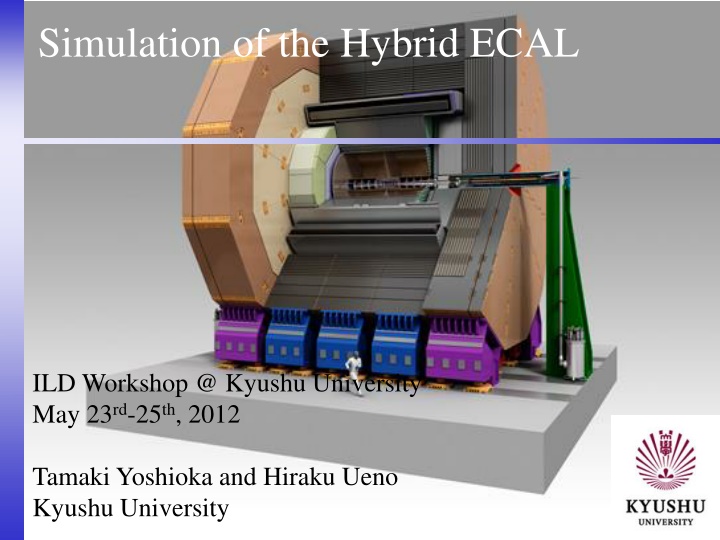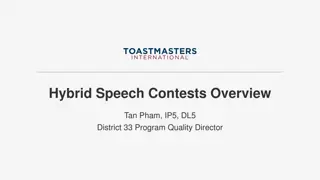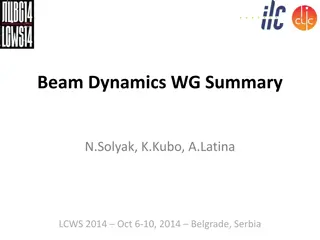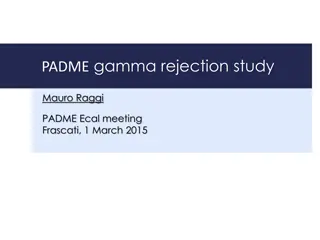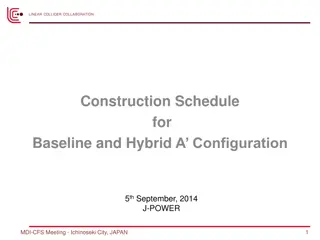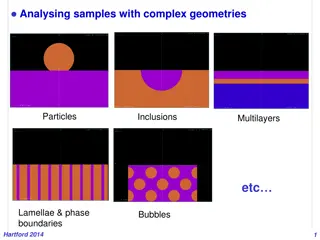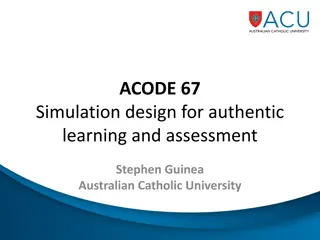Simulation of the Hybrid ECAL Workshop at Kyushu University 2012
Hybrid ECAL, a solution combining Silicon and Scintillator-strip layers, was studied at the workshop held at Kyushu University in May 2012. The configuration, parameters, calibration, and performance evaluation of the Hybrid ECAL were discussed. The study focused on achieving a cost-effective ECAL while maintaining performance. Evaluation of energy resolution and linearity using photons of varying energy levels indicated consistent performance across different types of ECALs.
Download Presentation

Please find below an Image/Link to download the presentation.
The content on the website is provided AS IS for your information and personal use only. It may not be sold, licensed, or shared on other websites without obtaining consent from the author.If you encounter any issues during the download, it is possible that the publisher has removed the file from their server.
You are allowed to download the files provided on this website for personal or commercial use, subject to the condition that they are used lawfully. All files are the property of their respective owners.
The content on the website is provided AS IS for your information and personal use only. It may not be sold, licensed, or shared on other websites without obtaining consent from the author.
E N D
Presentation Transcript
Simulation of the Hybrid ECAL ILD Workshop @ Kyushu University May 23rd-25th, 2012 Tamaki Yoshioka and Hiraku Ueno Kyushu University
Motivation for the Hybrid ECAL A solution to make the ECAL with a reasonable cost while keeping the performance as much as possible would be mixture of the Silicon layers and Scintillator-strip layers. Hybrid ECAL We have started the simulation study in order to evaluate the Hybrid ECAL performance. Scint strips (5-10 x 45 mm2) Si pads (5x5 mm2) 3, 4 5 6% 76 ( )*+, *- . /") 0, 12 8 , 4 6% 76 !"#$ !% &!"' 2012/May/25 ILD WS@Kyushu Univ. 2
Hybrid ECAL Configuration Sc layer Si layer 45mmx5mm strips 5mmx5mm cells orthogonal 5mmx5mm spacial resolution possibility of ghost u The config r at io n of H y br i d E CAL Si W Si W Sc W Sc W Si W Si W Sc W Sc z ... ... r 2012/May/25 ILD WS@Kyushu Univ. 3
ECAL Parameters We have studied the Hybrid ECAL with the following parameters. We have also studied the ScECAL and SiECAL for comparison. Notice that the absorber thickness and number of layers are same for all ECAL and different from those of default values. Active Layer Thickness Scintillator : 2.0mm Silicon : 0.5mm Scintillator : 2.0mm Silicon : 0.5mm Absorber Thickness Number of Layers Hybrid ECAL ScECAL SiECAL 2.1mm for inner 20 layers 27 3.5mm for outer 7 layers 2012/May/25 ILD WS@Kyushu Univ. 4
Calibration Calibration constants should be determined in order to convert the energy deposit in the active layers to the actual energy. We have employed the standard calibration method in Marlin. 10 GeV photon for ECAL 10 GeV KL for HCAL 10 GeV Muon for MIP calibration Calibration method for the Hybrid ECAL is not trivial; Calibration constants for Silicon layers and Scintillator layers should be determined separately. 2012/May/25 ILD WS@Kyushu Univ. 5
Calibration Method for Hybrid ECAL There are four calibration constants for the Hybrid ECAL. We assumed the relation between the calibration constants by taking into account their radiation length. Then these constants can be represented by a single parameter. 2012/May/25 ILD WS@Kyushu Univ. 6
ECAL Performances In order to check the calibration method, we have evaluated the energy resolution and linearity of the ECALs by using 1~50GeV photons. The performances of all ECALs are almost same. The calibration method works well. 2012/May/25 ILD WS@Kyushu Univ. 7
Other Calibrations HCAL calibration and MIP calibration are performed by following the standard calibration method in Marlin. 2012/May/25 ILD WS@Kyushu Univ. 8
Jet Energy Resolutions Mean value: Mean value: 27.25 27.25 0.2598 0.2598 100 ) GeV 90 80 (% E 70 60 RMS90 / 50 40 30 RMS90(cos <0.7) 27.20 0.26% 27.41 0.26% 27.64 0.26% 20 SiECAL Hybrid ECAL ScECAL Notice that the performances of SiECAL and ScECALwith current configuration are almost same for Z-pole events. 10 0 0 0.1 0.2 0.3 0.4 0.5 0.6 0.7 0.8 0.9 1 q cos( ) 2012/May/25 ILD WS@Kyushu Univ. 9
Summary and Future Plans We have established a calibration method for the Hybrid ECAL. Will look for another better method. We have evaluated the jet energy resolution for Z-pole events. Hybrid ECAL works well. Performance of ScECAL would be degraded by ghost hits due to the strip structure as jet energy increases. Will study higher jet energies. We expect the ghost hits can be removed with the support of the silicon layers in the case of the alternate structure. We will repeat same procedure with various Hybrid ECAL configurations. 2012/May/25 ILD WS@Kyushu Univ. 10
